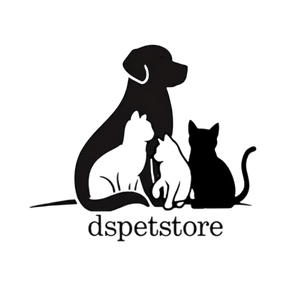How Muscle Mass Can Be Built in Your Dog
How Muscle Mass Can Be Built in Your Dog
A well-muscled physique in a dog is often seen not just as a sign of strength, but as an indicator of robust health and vitality. For working dogs, canine athletes, or pets recovering from an injury, developing lean muscle mass is particularly crucial. However, this goal is not achieved through exercise alone. A holistic approach is required, where diet, strategic exercise, and proper rest are harmoniously balanced. This guide is designed to explore the fundamental principles by which your dog's muscle mass can be safely and effectively increased.
The Foundation is Forged by Nutrition
First and foremost, the cornerstone of any muscle development plan is founded upon high-quality nutrition. Muscles are, quite literally, built from protein. Consequently, if a dog's diet lacks sufficient protein, there will be no building blocks available for muscle growth, regardless of the amount of exercise performed.
It must be ensured that the diet is rich in high-quality, bioavailable animal-based proteins. Sources such as chicken, beef, fish, and eggs provide the essential amino acids that are directly utilized in the synthesis of muscle tissue. The protein percentage in your dog's food should be carefully evaluated; for active dogs aiming for muscle gain, a higher percentage is generally recommended. Therefore, a conversation with your veterinarian about the ideal dietary composition for your specific dog's needs is a vital first step.
The Stimulus: Targeted Exercise Regimens
Following a proper diet, a structured exercise plan must be implemented to stimulate muscle growth. It is during physical activity that muscle fibers experience microscopic tears; the subsequent repair process is what causes them to grow back stronger and larger.
However, not all exercise is created equal. While leisurely walks are excellent for general health, they are not sufficient for significant muscle building. Instead, a focus should be placed on resistance and high-intensity exercises.
-
Resistance Training: Activities that force the muscles to work against an opposing force are incredibly effective. This can be achieved through swimming, which provides full-body resistance, or hiking on varied, hilly terrain. The use of a properly fitted weight-pulling harness (for appropriate breeds and with professional guidance) can also be considered.
-
High-Intensity Interval Training (HIIT): Short bursts of intense activity followed by brief rest periods can be very beneficial. Activities like sprinting to fetch a ball, controlled jumping, or agility course runs are excellent examples.
It is imperative that any new, strenuous exercise program is introduced gradually. Furthermore, the dog's safety and joint health must always be prioritized. A veterinary check-up is strongly advised before these activities are begun.
The Growth Phase: The Importance of Rest and Recovery
The role of rest in muscle building is often underestimated. The actual repair and growth of muscle tissue are not undertaken during the workout itself, but during the periods of rest that follow. Consequently, adequate recovery time must be provided to allow the body to heal and build stronger muscles.
Overtraining can be counterproductive, leading to injury and muscle breakdown rather than growth. As a result, ensuring your dog gets sufficient sleep and has designated "rest days" between intense workout sessions is just as important as the exercise itself.
The Enhancement: Strategic Supplementation
In addition to a solid foundation of diet and exercise, supplementation can be utilized to support and enhance the muscle-building process. When the body's demand for specific nutrients is heightened, a targeted supplement can provide the concentrated building blocks needed for optimal results.
These supplements are often formulated with specific amino acids, vitamins, and minerals that play a direct role in muscle synthesis and energy metabolism. When considering a dedicated muscle-building supplement, options are available that combine many of these beneficial ingredients. For instance, a product specifically designed to support canine muscle development, such as Bio-Pet Active Muscle Builder, can be explored. Supplements like this are formulated to provide the key nutrients required for efficient muscle repair and growth, supporting the efforts made through diet and exercise. As with any addition to your dog's regimen, a discussion with your veterinarian is recommended before use.
In Conclusion
Ultimately, the journey to building muscle mass in a canine companion is a multi-faceted endeavor. A high-protein diet, a challenging yet safe exercise routine, and sufficient time for recovery are the pillars upon which success is built. Through a patient and holistic approach, your dog's strength, health, and overall well-being can be significantly enhanced.


